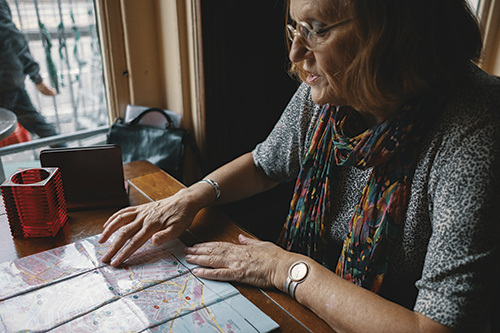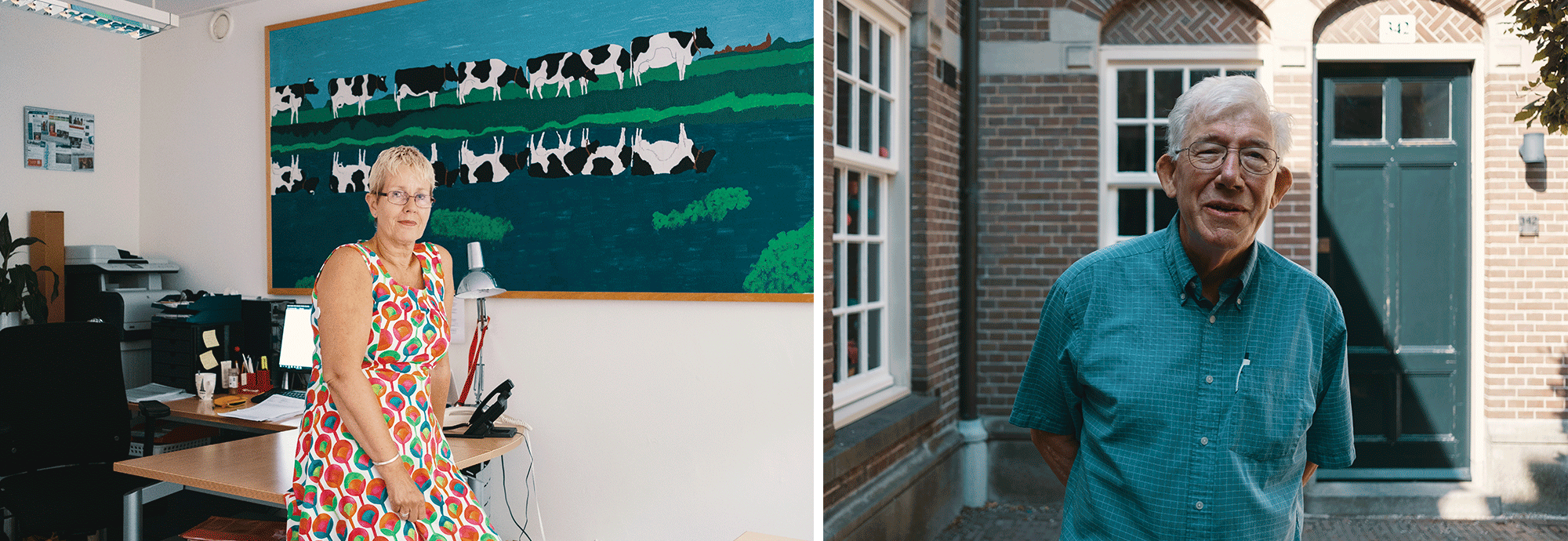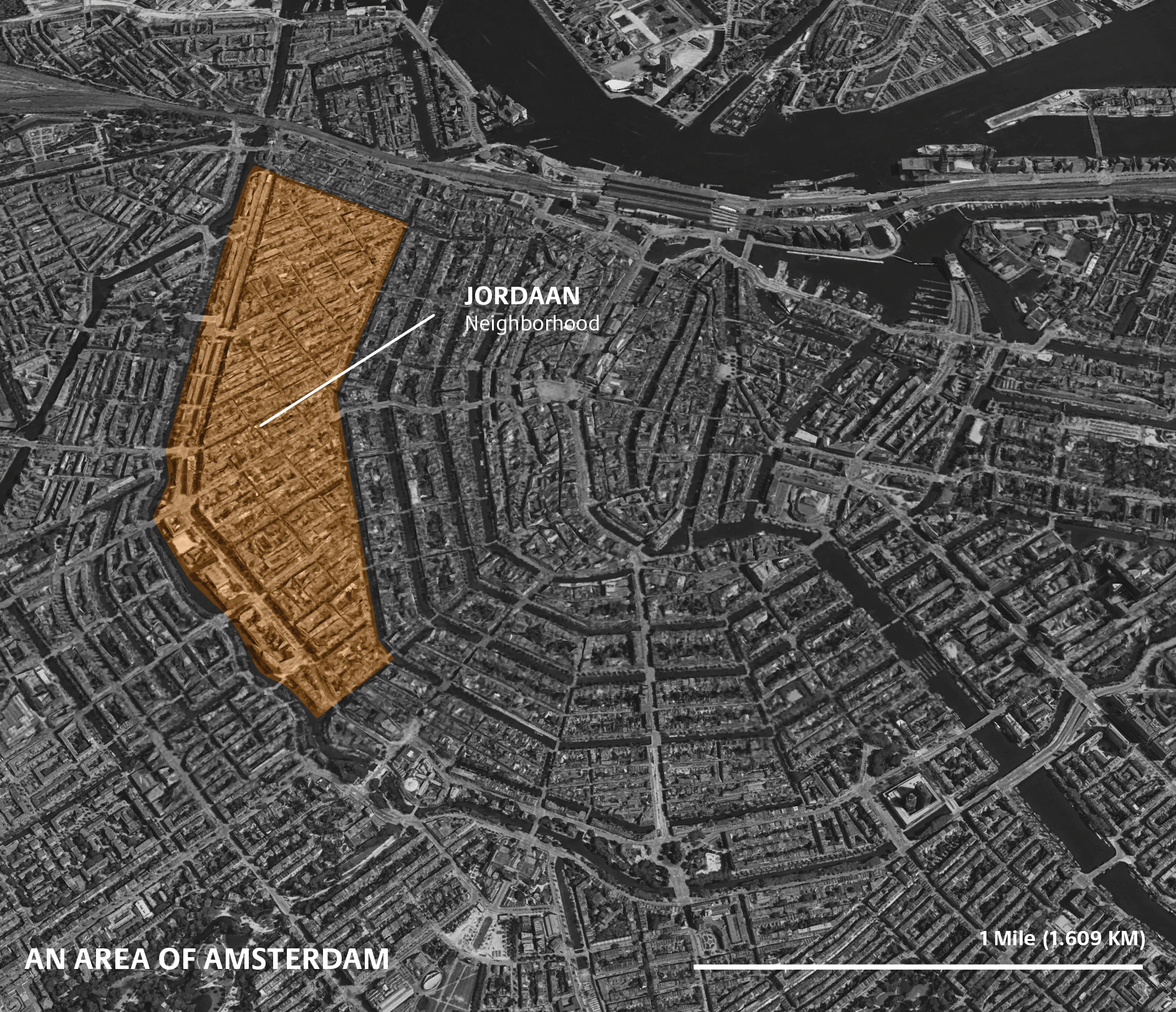- June 05, 2019
- Lauren Hassani
Give and Take

Dutch Seniors Find Fulfillment Through Volunteering
AMSTERDAM — After 25 years as a resident of the Jordaan neighborhood of Amsterdam, Mieke Lunenberg knows nearly every corner and crevice of its narrow streets. On a recent tour, she takes a meandering path, pointing out the obvious tourist spots (the Westerkerk church, where Rembrandt is thought to be buried) and the places that have meaning to her (the pub she frequents with her friends). Her commentary — a history lesson punctuated by personal anecdotes — paints a nuanced picture of the sliver of neighborhood running through central Amsterdam, just to the west of the Prisengracht canal.
Lunenberg, 69, is a volunteer tour guide and the definition of an active retired Amsterdammer. She is a member of Gilde Amsterdam, a volunteer-based organization that offers a variety of programs and resources for the community, including a unique guide program that enlists the expertise of local seniors. Twice a month Lunenburg puts her 30-year career as an educator to good use, offering groups of tourists an insider’s glimpse into the city she knows so well. Like many Dutch seniors, she has embraced volunteerism as a path to personal fulfillment in her later years.

Anne-Marie Bevers, director of Gilde Amsterdam, which runs a variety of volunteer-based initiatives such as career counseling, language tutoring, and buddy programs to prevent obesity; Jan Brockhuisen, 76, who has been giving walking tours with Gilde Amsterdam for 15 years.
ABOVE: Lunenberg mapping the route.
The Dutch volunteer at a far higher rate than any other country in the EU. More than one in five Dutch seniors (age 65-plus) volunteer in community and social services at least once a month. Some of this trend can be attributed to the country’s deep Christian roots; religious groups, as was common throughout the Middle Ages, cared for the poor and sick. Other elements of Dutch volunteerism are tied to the concept of polder, the extraordinary display of cooperation also tracing to the Middle Ages in which entire provinces worked together to build an elaborate system of dams and dykes to keep out the water. Looking out for fellow citizens has been infused into the Dutch psyche over many generations.
Nowadays, religious affiliation is dwindling in the Netherlands, which actually has one of the least religious populations in all of Europe. Yet volunteerism and philanthropy are going strong among all age groups, including older adults. Seniors are for the most part wealthy and well-educated, with extra time and a willingness to lend their skills. Especially as the country continues its transition away from a welfare state, the need for volunteerism is that much greater. As the government calls for more personal responsibility on the part of citizens, volunteers have become an important part of the answer, not only assisting in care and welfare organizations, but also informally by looking after friends, neighbors and family members.
Of course, the benefits of volunteer work aren’t one-sided. Anne-Marie Bevers, the director of Gilde Amsterdam, explains: “One of the pillars of the healthy-aging cities is volunteer work. Why volunteer work? Because it keeps you healthy. You’re busy with other things, and you don’t have time to think about dying or sitting in your chair at home.”
Gilde Amsterdam began in 1994 with 50 retired volunteers who wanted to make use of their professional and life skills. After long careers and much accumulated life experience, they had a lot to share. Today, they number some 850 volunteers throughout Amsterdam. The Mee in Mokum (walking tour) program is the flagship offering, with tour guides from 61 years old all the way up to 90.
Mieke Lunenberg has spent the past decade serving as a tour guide and training new guides for Gilde Amsterdam. In her spare time, she also teaches English to immigrants at the local community center. She finds two reasons to stay involved. “One, it gives structure to your day. Secondly, I like the intellectual challenge. Of course, you want to do something with your knowledge and experience.”
As Lunenberg continues with her neighborhood tour, she takes a series of turns that end in a narrow corridor behind a house. She points out a smaller structure that was built as an add-on to the original, part of the labyrinth of slums in this former working-class neighborhood. Her face lights up as she describes the complex history of the place she has grown to love. After this, the tour makes a quick stop in one of the oldest pubs in the city, before departing ways with full stomachs and the satisfaction of a day spent in good company.
The tour was enriching to those who learned about Amsterdam — and to the guide who taught them. Bevers sums up the benefits of volunteerism to seniors like Lunenberg: “They have a purpose in life, meaning in life. They have someone to help, and helping another person is good for you.” ◆

A map showing the location of the Jordaan, a neighborhood orig- inally built to house the city’s immigrant and working-class population.